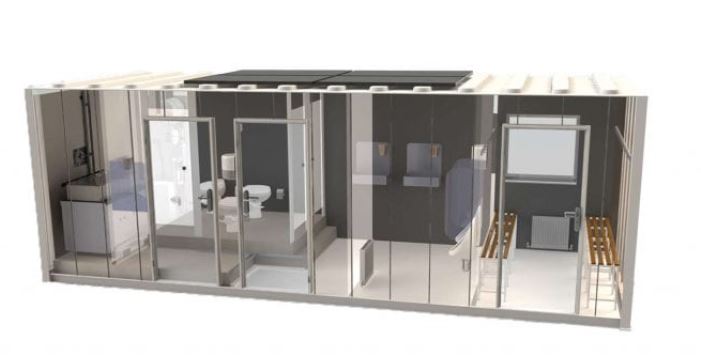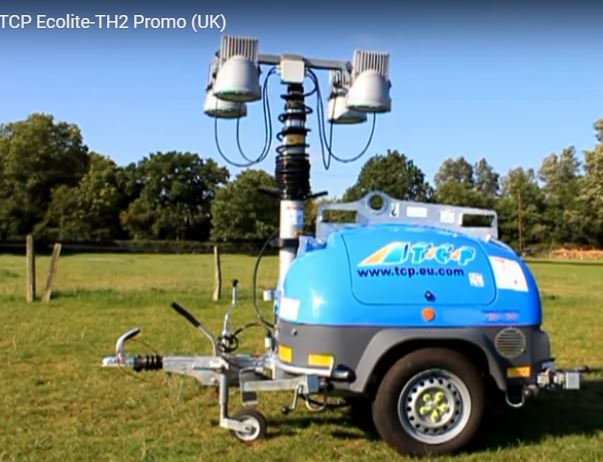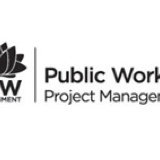Title Page
-
Site conducted
-
Project Number
-
Client
- Asda
- B&Q
- Co-op
- Greggs
- Morrisons
- Vape
- Other
-
Project Name
-
Type of Project
- New Build
- Refurbishment
- Store fit out
- Homeshop/ Click & Collect Canopy
- Homeshop (internal works only)
- Store fit out with external works
-
Site Location
-
Contracts Manager
-
Site Manager
Construction Programme
-
Project Start
-
Site set up
-
Decommissioning of site set up
-
PC
-
Conducted on
-
Prepared by
-
Location
-
Select the conditions which affect your site
Ecology
-
Will work impact the local ecology such as wildlife, plants, tress and hedgerows etc.
-
Impacts & controls:
Site Clearance, Site Set Up, Traffic, Groundworks, Construction work: Destruction and loss of wildlife and habitat for wildlife. Plan site clearance works to avoid nesting, hibernation or breeding seasons. Employ qualified ecologists to carry out necessary surveys, this will highlight the necessary sensitive areas that require protection and management. Liaise with statutory bodies and local groups to explain mitigation measures. Inform site personnel of any protected areas and the consequences of damage to these areas. -
Has the contractual and client documentation been reviewed to identify all sensitive areas containing wildlife (animals and vegetation)?
-
Have all relevant ecological risks been included in the construction environmental management plan, together with their mitigation measures?
-
Have licences been obtained from the relevant conservation body to move protected species or disrupt their habitats?
-
Have non-native invasive species been identified?
-
Have specific biosecurity plans been drafted and implemented if non-native invasive species have been identified?
-
Are areas containing wildlife suitably protected from the construction work?
-
Controls in place to suitably protect wildlife:
-
Are trees suitably protected to avoid damage from the works?
-
Have vegetation removal and other construction works been programmed to avoid breeding and nesting periods?
-
If required, has permission been sought and given by the Local Authority to remove hedges or trees that have a tree preservation order (TPO)?
-
Please add any site specific conditions:
Contaminated Land
-
Has a preliminary or desktop investigation of the site been carried out to identify the risks from contamination?
-
Has the investigation highlighted contamination?
-
What is the type and extent of the contamination?
-
Is a remediation strategy required?
-
Has the remediation strategy been agreed by the local authority/Environment Agency, where appropriate?
-
Procedure for emergency disturbance/discovery:
-
Is suitable decontamination welfare facilities to be provided for decontamination work?
-
Is suitable washing facilities to be provided for cleaning contaminated vehicles?
-
Please specify site specific measures:
-
Can stockpiles be positioned well away from drainage systems and watercourses?
-
Control Measures:
Site Logistics
-
Have local sensitive areas been identified (such as schools and residential areas)?
-
Sensitive areas:
-
Has location of suitable parking arrangements for site personnel and plant been established and defined?
-
Location:
-
Is permission required from the Local Authority for any road closures or erection of hoardings on the public highway?
-
Will generator power be required for site set up?
-
Impacts & controls:
AIR: Select low emission generator & ensure maintenance up to date, do not place under trees as the diesel particles emitted can damage foliage.
GROUND: Locate generator and fuel cube on hardstanding or in drip trays to prevent any spills leaching into the ground. Fuel cube should be bunded and reinforced to prevent damage. Ensure a suitable spill kit is on site
WATER: Generator and fuel need to be located away from watercourses, including drains. If there is a risk of contaminants entering the watercourse then additional measures should be put into place. This could include 'witches hat' in adjacent drains to contain any leaks. NUISANCE: Chose a super-silenced generator to avoid noise pollution. Where possible, switch off power overnight. -
Please add any site specific conditions:
-
Site accommodation - are cabins required?
-
Eco- cabins to be used by preference. Ensure these have PIR Lighting, percussion taps and door closers to reduce energy use. Consider using cabins which use renewable energy e.g. solar panels.
-
Please add site specific comments & photos
-
Will fuel be stored on site?
-
Impacts & controls:
GROUND: Locate fuel cube on hardstanding or in drip trays to prevent any spills leaching into the ground. Fuel cube should be bunded and reinforced to prevent damage. Ensure a suitable spill kit is on site
WATER: Fuel needs to be located away from watercourses, including drains. If there is a risk of contaminants entering the watercourse then additional measures should be put into place. This could include 'witches hat' in adjacent drains to contain any leaks.
Water
-
Have all watercourses and drainage systems been identified on site?
-
Have all works in, above or near watercourses been agreed with the relevant body?
-
Have all discharges to streams, ditches and drainage systems been consented by the relevant Environment Agency body?
-
Have all water abstractions from rivers, ponds, lakes or water mains been consented by the relevant Environment Agency body?
-
Have designated areas been identified and defined to wash out concrete lorries away from watercourses and drains?
-
Have water discharges been properly identified and procedures in place for treatment (such as by using settlement tanks or lagoons)?
-
Have water monitoring procedures been identified to ensure discharges are the correct quality?
-
Have procedures been identified to ensure watercourses and drainage systems are protected from run off and silty water?
-
Are bunds required for storing fuels, oil and chemicals? If so, are they 110% of the capacity of the largest container or 25% of the combined capacity of drums?
-
Is all fuel, oil and chemicals located as far as possible from drain and watercourses?
-
Is all fuel, oil and chemicals stored on impermeable surfaces to avoid ground contamination?
-
Have steps (such as the use of plant nappies during refueling) being taken on site to prevent ground contamination or pollution by fuels, oils and chemicals etc?
-
Have proactive measures been taken to reduce water consumption? Consider greywater recycling, welfare reduction measures, triggers on water hoses etc.
-
Have water meters been fitted to measure water usage, where possible?
-
Is water consumption being monitored, recorded and communicated to the relevant departments to promote water use minimisation?
Nuisance
-
Are there residential properties or other businesses who might be affected by our work? Consider, noise, dust, light & increased traffic+
- Noise
- Light
- Traffic
- Dust
- Vibration
- Emissions
- N/A
-
Check with the local Environmental Health Officer to determine if there are any noise restrictions on the site, especially if night or weekend works will be taking place. Bear in mind that even if our works are internal, the noise caused by MEWPS or FLT moving around, material being dropped into skips, even talking and laughing can travel at night and cause disturbance. It is easier to work with EHO and minimise the opportunity for complaints than risk a section 60 notice which would restrict our working hours. Generators should be super-silenced and not run overnight if possible. Consider avoiding diesel plant & muffling reversing alarms to minimise noise.
-
Has the appropriate liaison or communication taken place with local stakeholders who may be affected by nuisance?
-
Have planned works been assessed to identify the noise impact on local neighbours, wildlife and buildings?
-
Is a Section 61 notice under the Control of Pollution Act 1974 required?
-
Procedures in place for monitoring noise levels to ensure that levels are kept within limits?
-
If possible, have working methods been reviewed to use equipment that reduces noise?
-
Have working hours been defined to restrict noisy operations to certain times of day?
-
Is noisy plant kept as far as possible from sensitive receptors?
-
Are haul routes well maintained to minimise vehicle noise?
-
Where required, are noise screens being used to reduce noise transmission?
-
Does the site have a procedure for dealing with complaints and issues?
-
Site specific measures
-
Lighting for external works, compounds or access between the compound and work site can cause a statutory nuisance to neighbours. Use directional lighting to prevent the spread of light into areas its not needed. Consider electrical or hydogen powered lighting stands to reduce noise
-
Has the appropriate liaison or communication taken place with local stakeholders who may be affected by nuisance?
-
Site specific measures:
-
Consider delivery routes to site, as well as contractor vehicles and parking. Are there schools or other sensitive areas where increasing congestion would be an issue? Schedule deliveries to avoid busy times such as school drop off/pick up or rush hour traffic especially on smaller roads.
-
Have working hours been defined to restrict traffic to certain times of the day?
-
Are deliveries planned to suit the local area?
-
Is site parking planned to suit the local area?
-
Site specific measures:
-
Demolition, excavation & storage of spoil can cause dust which can be both a nuisance and a health hazard. Mud can be tracked onto roads where it dries to form dust. Supress dust at source by using on tool extraction or water suppression. Damp down spoil heaps to prevent dust, however if using water, consider how run off will be contained so that silt & soil does not end up in watercourses or drains.
-
Are appropriate dust suppression techniques in place to minimise dust?
-
Can dust on site haul roads and material stockpiles be dampened down adequately on dry, windy days?
-
Are site vehicle speed limits in place to reduce dust?
-
Are public roads regularly cleaned using a road sweeper or vacuum, where applicable?
-
Will vehicles that remove granular or dusty materials have sheeted covers?
-
Will enclosed chutes and covered skips be used for lowering dusty demolition or waste materials?
-
Are cement and concrete being mixed in enclosed areas to prevent dust?
-
Are dust and emission monitoring arrangements in place where there are risks of nuisance or environmental damage to sensitive receptors?
-
Are material stockpiles or spoil heaps protected and stored away from sensitive areas, where possible?
-
Site specific measures:
-
Vibration from mechanical equipment can cause statutory nuisance to neighbours. Consider methods to establish the solution with the least vibration risk. Consider higher frequency vibration as this causes less damage than low frequency.
-
Is Section 61 notice under the Control of Pollution Act 1974 required?
-
If a Control of Pollution Act Section 61 consent is in place, are vibration levels being recorded to ensure that levels are kept within limits?
-
Have the works been assessed to identify the vibration impact on local neighbours, wildlife and buildings?
-
Can the activity be done using a different process/equipment, that results in lower vibration levels?
-
Can the equipment be isolated from the transfer medium?
-
Can plant be operated in a way that generates less low-frequency vibration?
-
Are haul routes well maintained to prevent vehicle vibration?
-
Site specific measures:
-
Equipment and materials can be a source of airborne pollution, both causing a nuisance and a health hazard. Consider methods such as limiting the use of internal combustion engines/vehicles, equipment/plant is switched off when not in use, routes are minimised as much as possible, planned and preventative maintenance plans, consider materials/fuels that are less pollutive/hazardous. Connecting to the grid rather than using generators.
-
Can site set up be connected to the grid?
-
Are plant routes minimised as much as practically possible?
-
Have less pollutive/hazardous materials/fuels been considered?
-
Are emission monitoring arrangements in place and records maintained where there are risks of nuisance or environmental damage?
-
Site specific measures:
Resource Efficiency
-
Can the project consider the use of alternative techniques for the efficient use of resources (such as off-site manufacture design, design-to-fit modular sizes, manufacture-to-fit design and design for disassembly)?
-
If so, what techniques can be considered?
-
Can materials be stored in a manner to avoid repetitive handling?
-
Can materials be stored with the appropriate security to prevent damage, loss, theft or vandalism?
-
Will stockpiled materials be stored to prevent cross-contamination with other materials or wastes?
-
Control measures:
-
Will stockpiled materials be stored away from sensitive areas, drains or watercourses?
-
Controls measures:
-
Can hazardous/COSHH materials be stored/disposed of correctly?
-
Control measures:
Waste Management
-
Has types of waste been identified?
-
Types of waste:
- Inert
- Non-Hazardous
- Hazardous
-
List:
-
List:
-
List:
-
Quantity of waste (m3, kg, T):
-
Qty:
-
Qty:
-
Qty:
-
Can a waste target and any relevant objectives be set for the project?
-
Have waste responsibilities been defined to identify who is disposing of what, where and when?
-
Have area(s) been established on site to segregate and reuse waste materials?
-
Can hazardous wastes (oil, fuel, paints etc.) be stored separately from other waste streams?
-
Control measures:
-
Control measures:











